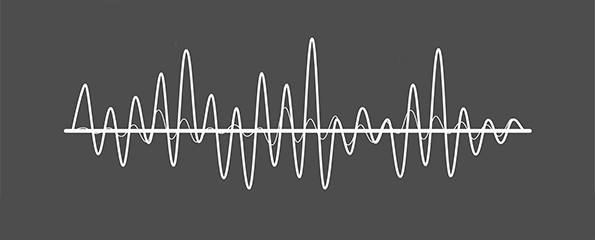Smart materials and good vibrations for new treatment methods
Researchers have used the power of rock and roll to deliver and deploy safer quantities of cancer-killing drugs directly where they are needed.
Using a simultaneous application of alternating (AC) and direct current (DC) power to create mechanical vibrations, they have shown they can control the release of a drug, attached to tiny magnetic particles, embedded on the surface of a cell-like carrier.
The simultaneous application of AC and DC power creates a vibration, or friction, that causes the drugs to become free of the carrier. A magnetic field draws the particles and drugs to precisely where they are needed.
The idea of using magnetic forces for targeted drug delivery is being tested in a partnership between researchers from UOW’s Institute for Superconducting and Electronic Materials (ISEM) and the Victor Chang Cardiac Research Institute (VCCRI).
The concept of targeted or site-specific drug delivery has been of interest to researchers because it could reduce the side effects from ingesting large doses of highly toxic cancer medications that are required to kill a tumour.
It could also target tumours where other treatments have shown little impact.
Holding researchers back has been the challenge of how to stop the drug carrier at the tumour as it flows through the bloodstream, and how to trigger a release of its life-saving payload.
ISEM Senior Research Fellow Dr Shahriar Hossain said his team soaked magnetic particles in a synthetic dye, which replicates how the drug would be attached to the particle surface, and activated a magnetic force.
“Initially we applied AC power only, which caused the dye to release but with little control. It simply dispersed all over the place,” Dr Hossain said.
“But when we applied DC power as well the release was much faster and localised, which would be very useful for getting all of the drugs to attach to a specific site.
“The release mechanism performed very well even at modest magnetic fields. The added benefit is that these drug carriers are easy to make and control.”
The work, published recently in the journal Microporous and Mesoporous Materials, builds on earlier success in developing ‘smart’ drug carriers.
Dr Hossain’s team attached tiny magnetic particles to membrane proteins known as channels that have pores, which open and close in response to mechanical stress exerted on these channels.
They are inserted into lipid vesicles chemically loaded with drugs, and once the mechanical stress is induced via a magnetic field, the channels open and release the drug from inside the vesicles.
Encapsulating the protein in a cell-like substance called a liposome protects it as it moves through the patient’s bloodstream.
While the ‘smart liposomes’ proved a success, Dr Hossain said the researchers still needed to fine-tune the drug delivery mechanism to ensure they were hitting the target.
“Material design is fundamental to the concept,” Dr Hossain said. “We need the right materials to carry the drug as well as be able to guide it to the treatment location.”
Professor Boris Martinac, project collaborator and head of the Mechanosensory Biophysics Laboratory at VCCRI, said it was exciting and fascinating to be able to get a team of people from diverse science and engineering disciplines working together to develop a next generation of efficient and highly specific drug delivery systems with minimal side effects for cancer patients.
“The value of such a project consists not only in the fact that it provides a basis for an innovative new method of using magnetic forces to target tumours that could vastly improve the treatment and wellbeing of cancer patients, but also that it promises to generate new knowledge of considerable potential for applications in nanotechnology and medicine of substantial market value.”
(Source: University of Wollongong, Microporous and Mesoporous Materials)
Dates
Tags
Created by:

 Login
Login














